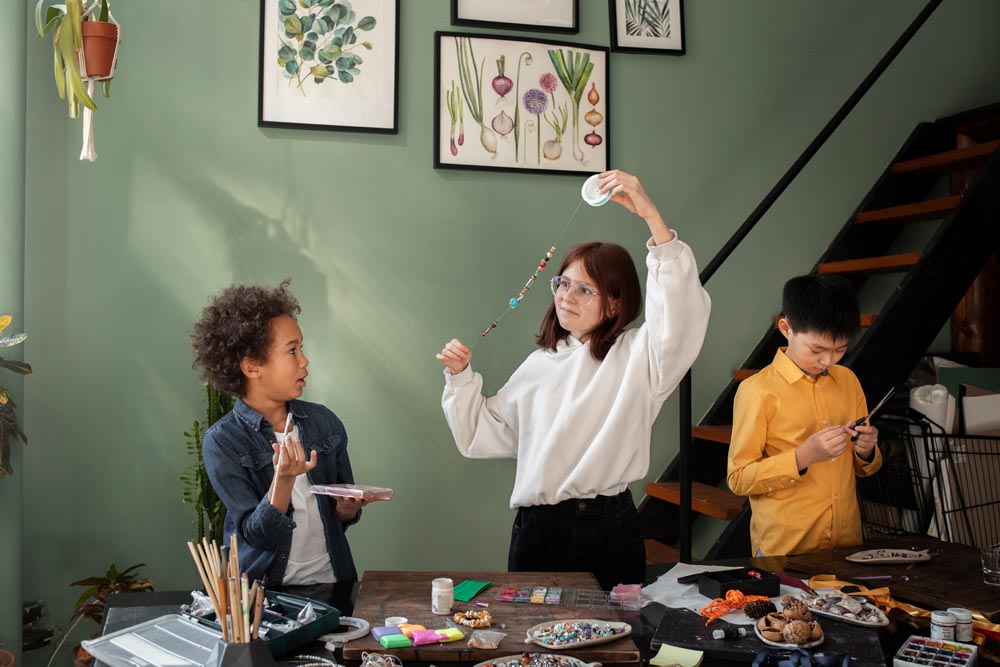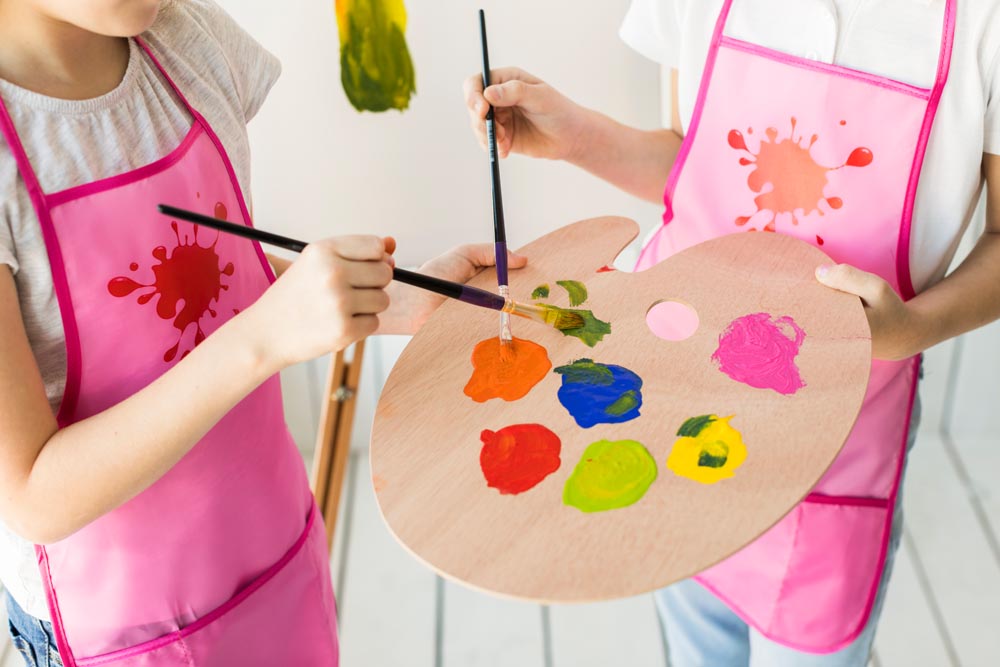When most parents think of schoolwork, images of math drills, spelling quizzes, and essay deadlines usually come to mind. But tucked between science presentations and reading logs lies a powerful and often underestimated learning tool: the art project.
Whether it’s a finger-painted jungle scene in kindergarten or a high school photography exhibition, art projects do far more than fill up time or decorate classroom walls. In international schools across Malaysia, where global curricula meet local culture, education in the arts is stepping up as an essential part of a well-rounded student experience. And as a parent, how you respond to your child’s creative efforts can make all the difference.

More Than Just Glue and Glitter
To the untrained eye, an art project might look like a pile of construction paper scraps, but what’s really happening behind the scenes is brain-building magic. Studies show that engaging in creative activities stimulates both the right and left hemispheres of the brain. This kind of whole-brain engagement supports problem-solving, critical thinking, and emotional regulation.
For young learners, art develops fine motor skills, focus, and perseverance. As they grow older, the creative process encourages self-expression and risk-taking—skills that aren’t always easy to nurture through textbook learning alone. In fact, students who participate in arts education are more likely to excel in other subjects, stay in school longer, and develop higher levels of empathy.
In international schools, where the focus often blends academic rigour with global citizenship, art projects help students process cultural diversity and find their voice in a multicultural community. A sculpture project about sustainability, a drama piece on identity, or a song performance in multiple languages all reflect how creativity builds understanding beyond borders.
Art Projects Build Life Skills (Quietly)
Let’s break it down: What exactly are your children learning when they bring home a papier-mâché volcano or a self-portrait collage?
- Planning and Organisation: Art projects usually follow a series of steps—brainstorming, sketching, testing, revising. Children learn to manage their time and break tasks into achievable parts.
- Confidence and Decision-Making: Making creative choices (which colours to use, what material to include) strengthens decision-making and helps children trust their intuitions.
- Perseverance: Mistakes happen in art—and they’re part of the process. Learning to adapt, redo, or try again builds resilience.
- Collaboration: Many art assignments are group-based, especially in international schools that value teamwork. Students learn to listen, share roles, and respect different ideas.
- Emotional Awareness: Art is an outlet. Children who might not be comfortable expressing emotions through words can often do so through colour, shape, or performance.
All of these skills show up later in life—at university, in job interviews, and even in personal relationships.
But It’s Not Academic, Right?
This is a common concern. Parents often worry that spending too much time on “non-academic” work like art might distract students from core subjects like maths or science. But here’s the truth: arts and academics aren’t rivals—they’re partners.
Creative work strengthens the same cognitive muscles students use for writing essays or solving equations. For instance, learning to draw a three-dimensional object boosts spatial awareness, which supports geometry. Drama performances improve memory and public speaking, key for oral exams and presentations.
In fact, the world’s top universities—from Oxford to Stanford—regularly highlight the importance of creativity in their admissions process. They're not just looking for high GPAs, but for students who can think differently, communicate well, and offer fresh perspectives.

Your Role as a Parent
You don’t need to be an artist to encourage creativity at home. What matters most is how you react to your child’s projects and progress. Here are some simple ways to support the arts in your child’s education:
1. Celebrate the Process, Not Just the Product
Instead of focusing only on how “nice” a piece looks, ask questions like:
- “How did you come up with this idea?”
- “What was the hardest part?”
- “Would you do anything differently next time?”
This shifts the focus to effort and reflection, helping children value learning over perfection.
2. Create Space for Creativity at Home
You don’t need a full art studio—just a small corner with paper, colours, recycled materials, and a no-judgement rule. Let your child create freely, even if it gets messy.
3. Attend School Exhibitions or Performances
International schools in Malaysia often host art shows, musical recitals, or theatre nights. Showing up for these events shows your child that you care—and he will remember that more than you think.
4. Let Them Try (and Quit) Creative Activities
Sometimes your child might love piano one year and want to quit the next. That’s okay. The goal isn’t to master everything, but to explore. Support their curiosity and give them permission to move on when the time feels right.
5. Talk About Real-World Creativity
Point out how creativity shows up in daily life—architecture, fashion, animation, advertising. It helps children see that the arts are not only valid careers but essential to society.

Arts in International Schools: A Unique Advantage
Many international schools in Malaysia are ahead of the curve when it comes to integrating arts into education. They often offer:
- Well-equipped studios and performance spaces
- Opportunities for meeting visiting artists and attending cultural workshops
- IB, Cambridge, or American curricula that include arts components
- A strong focus on student-led projects and creative exploration
This gives your child a rare chance to experience creativity on a global stage—learning African drumming in the morning, joining a digital media workshop in the afternoon, and exhibiting their work to an international community.
By supporting arts in school, you’re not just encouraging fun activities —you’re giving your child a head start in becoming a confident, balanced and curious global citizen.
Final Thoughts
So the next time your child asks for more glitter, or you find yourself struggling to help them with a papier-mâché sea turtle, take a breath and lean in. These moments matter.
Because in the end, art isn’t just about making something beautiful—it’s about helping your child become someone thoughtful, bold and full of imagination. And that’s worth more than any homework grade.
Interested to read more?















![[St. Joseph’s Institution International School Malaysia] The Lasallian Education Ethos for a Better Future - Gratitude and Giving](https://mint-edm.sgp1.digitaloceanspaces.com/production/PPIxso2IiVm1U64SEHCuXjI03yE7Rg.jpeg)




















